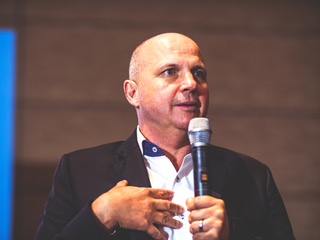Ways to Measure the Impact of Leadership Development by Andrew Eaton
There are various approaches to measuring the results of leadership development. Unfortunately, it can be challenging to quantify results accurately due to variations in data collection techniques.
An experiment using pre- and post-training quantitative measures, a control group, and strategies designed to minimize unique variables is ideal for demonstrating causation. Unfortunately, its implementation and execution may prove challenging.
1. Self-Assessment
Andrew Eaton emphasizes that self-assessment allows leaders to reflect upon what they have gained from past leadership experiences and determine how this knowledge could be applied to future challenges. Furthermore, this practice shows they take their personal development seriously.
One metric often overlooked by organizations is how much participants' new skills translate to on-the-job behavior, which may be challenging to measure but is essential in understanding.
An evaluation process includes many steps and metrics; this step, in particular, can demonstrate whether a leadership development program is worth its investment. But it should not be seen as the sole measure.
From the outset, stakeholders must participate in measuring and evaluating leadership development efforts. Doing so ensures they feel part of the process while building organizational support for your efforts. It may be tempting for stakeholders to resist measuring impact or evaluation due to perceptions that it will be complicated or costly. But these concerns tend to be unfounded: even without pinpoint accuracy, there are ways of providing meaningful data demonstrating return on investments made into leadership development programs.
2. Feedback
Leadership development can be complex compared to tangible training initiatives like error reduction in a manufacturing plant or improving first-call resolution in a call center. Yet, it can still be calculated using various methods. Nonetheless, leadership development impacts can be assessed via these measures and more.
Andrew Eaton asserts that self-assessments, 360-degree feedback, and performance evaluations can all provide essential assessments of a leader's effectiveness and areas they should improve upon.
Engagement between participants and stakeholders in the evaluation process is essential for creating an organizational culture of Learning and accountability and providing evaluation information in ways that are useful to various audiences.
Track the overall effect of your leadership development program on crucial business outcomes. For example, suppose employees become more productive or motivated after attending training courses. In that case, this may be a sure sign of its success, and you can use this data to demonstrate its worth and encourage continued participation in future programs.
3. Surveys
Conducting surveys to gauge participant reactions and levels of satisfaction after participating in leadership development programs can help measure impact. Another approach would be observing whether their newly acquired competencies and skills have been utilized at work and, if so, at what frequency.
Andrew Eaton points out that evaluation requires training directors to select specific competencies and skills to measure and compare pre and post-training results, use control groups, and minimize unique variables. Though these measures can be costly and time-consuming, they're essential in demonstrating the value of leadership development programs.
If you plan to use surveys as measurements, consult with a research organization with experience designing and administering extensive, complex studies that will generate quantifiable data and valid conclusions. Before disseminating it to participants, conduct a pilot test of your survey questions to ensure they are clear and meaningful results will result in meaningful measurements. Once your data collection has finished, take the time to analyze it thoroughly and share findings before creating strategies to promote organization-wide change and learning across your company.
4. Projects
Some organizations go beyond survey responses when measuring whether leadership development training sticks. Instead, they poll participants' direct reports and supervisors about whether their new skills are being used at work - this method does not provide scientific proof. Still, it serves as a qualitatively informed method for judging whether the program has had its desired effects.
Andrew Eaton highlights that leadership programs attempt to demonstrate their worth by directly connecting their initiatives to tangible results such as customer or user satisfaction, improved productivity, efficiency, or quality. Measuring at this level can require extensive research beyond what is usually available, including conducting multiple test-retest experiments with control groups and numerous participants to increase sample size while decreasing any effects from outside variables.
5. Evaluation
Sometimes, it can be challenging to determine whether a leadership development program has caused tangible positive change in individuals. Causation can only be proven with experimental data from multiple control groups and non-training participants, pre/post quantitative measures before/after training, and other sources. Testing such results is expensive and time-consuming but may prove worthwhile depending on the outcome.
Andrew Eaton clarifies that evaluations should be considered an integral component of leadership development programs rather than added as an afterthought. Rigorous evaluation practices will enable you to demonstrate their worth over time and continually enhance them. Furthermore, you should use evaluation results for broader organizational change and learning initiatives and justify additional funding for leadership development programs.





Comments